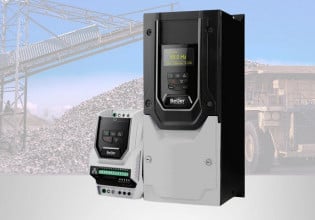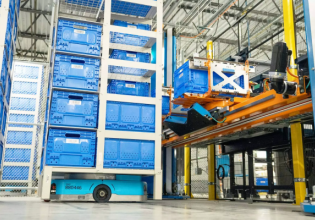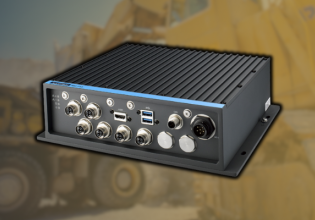How To Know When Predictive Maintenance Isn’t An Ideal Solution
To know if predictive maintenance is the right strategy, it might help to first recognize if it isn’t. Here are some indicators that your organization should improve before implementing predictive maintenance.
There is so much hype around predictive maintenance nowadays, and industries worldwide are investing a lot of resources to shift their traditional maintenance strategies to a more predictive approach.
A major key to success is carefully considering a manufacturing plant's needs and requirements to select and deploy predictive maintenance. Otherwise, all the invested time and resources will be wasted without seeing the intended outcome.
To know if predictive maintenance is the right strategy for you, it might help to be able to recognize if it isn’t—we’ll discuss some visible signs that your organization is not yet ready for predictive maintenance.

Figure 1. Getting the needed budget to implement predictive maintenance requires getting management on board with the idea. Image used courtesy of Canva
1. Top Management Isn't Fully on Board With the Idea
The engineering department likely knows the benefit of predictive maintenance already and can see the future return on the investment. However, sometimes it’s difficult to convince top management to implement it due to reasons such as budgetary issues and a lack of confidence in predictive maintenance.
Like in all engineering development programs, implementing predictive maintenance is a major shift in the manufacturing life cycle. It changes how different stakeholders, such as production, quality, and supply chain, interact. It also affects their roles in the overall manufacturing environment. This paradigm shift cannot be implemented only by an engineering department or consultant—it requires the support of top management at all stages.
If top management isn’t on board with implementing predictive maintenance, it will become difficult for the engineering department to allocate the budget. It will also face difficulty performing gap analysis for various assets, which is a critical step in implementation.
There are other challenges that can lead to difficulties:
-
Allocating production assets for integration and development
-
Recording historical trends for various departments and assets
-
Adjusting production operations
-
Getting the entire plant personnel to take part in implementation

Figure 2. Collecting machine condition data requires existing sensors and instrumentation systems to be to the required level. Image used courtesy of Canva
2. Process Condition Monitoring Sensors Aren't Yet Used
Traditional sensors and instrumentation systems cannot facilitate the implementation of predictive maintenance—they lack the basic requirements of data collection and transmission.
Predictive maintenance employs condition monitoring systems that measure machine conditions such as vibration and abnormal temperature values. They represent machine condition and help track production failures such as breakdown and parts wear and tear.
Additionally, the condition monitoring system sends the collected data to the main computing where software analytics predicts and performs maintenance planning.
It is impossible to collect machine condition data if the existing sensors and instrumentation systems are not updated or enhanced on the required level. It will also not be possible to generate historical trends for predicting future machine faults and breakdowns.
An important note here is that if you’re currently using preventive and condition-based maintenance, and it’s working just fine for you, there’s no need to switch.
Figure 3. Software is the heart of a predictive maintenance system, which is why having it integrated with the local machinery I/O and controllers is crucial (click to enlarge). Image used courtesy of LimbleCMMS
3. Software Isn’t Integrated With the Machinery
If predictive maintenance analytical software isn’t integrated with the local machinery I/O and controllers, there will be no ability to respond to commands, and it will create difficulties in running successful predictive software analytics.
This will result in the loss of critical data from the controller (fed through different condition monitoring devices) and failure to make timely and accurate decisions.
Software is the heart of a predictive maintenance system, which performs vital information collection functions, keeping historical trends, and predicting and planning maintenance activities. It stores all the necessary information and compares it with the standard variables to predict and diagnose the fault.

Figure 4. Experience and talent are needed for running a predictive maintenance system. Image used courtesy of Canva
4. Lack of Specialized Skills
Lack of specialized skills is a major hurdle in getting a predictive maintenance system into action. Many of these specialized skills come from field experience.
-
Understanding software analytics
-
Debugging software errors
-
Smart sensor technology
-
Maintenance of smart instrumentation systems
-
Installing and debugging network systems
Predictive maintenance relies on specialized systems that utilize advanced technology for reliable and timely data collection. Additionally, they are also capable of communicating with each other and with the master controller. This requires production and maintenance personnel to accurately understand the latest control system technology to use and troubleshoot a predictive maintenance system.
Acquiring these skills must be employed as part of predictive maintenance implementation strategies. Otherwise, the organization will depend on third-party resources, leading to increased costs for maintaining and operating a predictive maintenance system.

Figure 5. While a predictive maintenance system results in a return on investment, upfront costs can be difficult for organizations with a limited budget. Image used courtesy of Canva
5. Budgetary Issues
Predictive maintenance requires considerable budgets for the initial implementation. This can become difficult for organizations with constraints in budgets, such as those in their initial stages of development and just starting their operations—they simply can’t afford it.
Predictive maintenance requires a major upgrade in equipment design and associated instruments. Sometimes, that’s a complete change in equipment operation, mechanical structure, and electrical systems. Additionally, these systems are expensive compared to traditional systems.

Figure 6. Organizations should have historical data before implementing predictive maintenance. Image used courtesy of LimbleCMMS
6. The Organization Isn't Mature Enough
If the organization relies on reactive maintenance, switching to predictive maintenance is a big jump. Reactive maintenance decreases the organization’s potential to gather data necessary for predictive maintenance.
Software analytics in predictive maintenance uses historical trends to predict and apply maintenance practices. The accuracy of predicting maintenance relies on accurate maintenance data, which cannot be gathered and collected using reactive maintenance techniques.
Effective tools for maintenance data collection are computerized maintenance management systems (CMMS) or enterprise asset management (EAM), which collect and record data for every asset in an organization.
Suppose the organization doesn’t have CMMS/EAM or has poor records overall—in that case, it will take a long time before the predictive maintenance model gathers enough in-service data to make accurate predictions.
Conclusion
Before implementing a predictive maintenance strategy in a plant, it is best to perform a readiness activity. This helps analyze the organization’s current preparedness for implementing a predictive maintenance strategy. Readiness tests also help curate actual objectives and milestones tailored to a specific organization.







